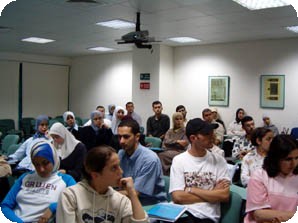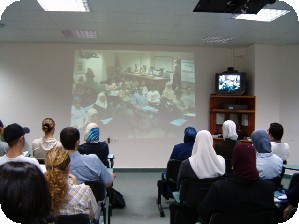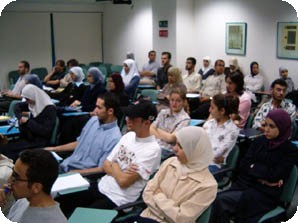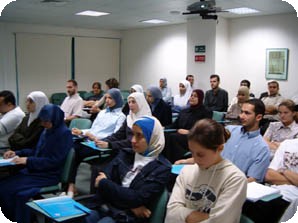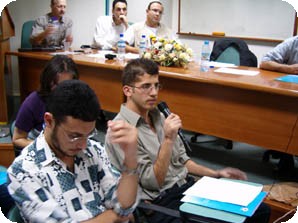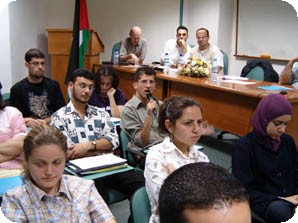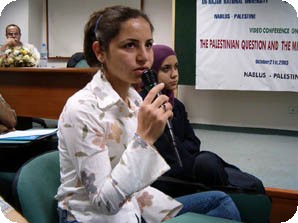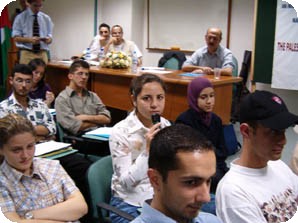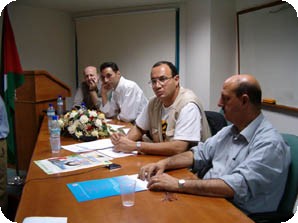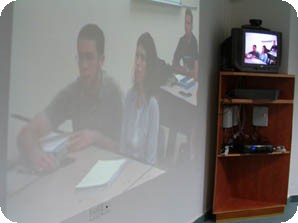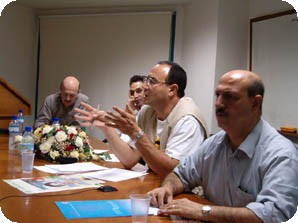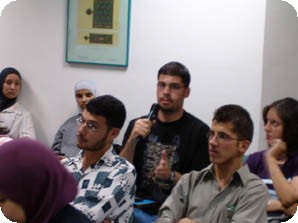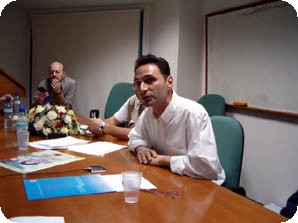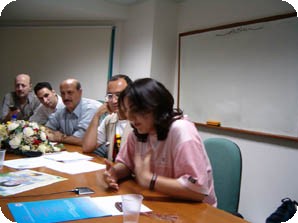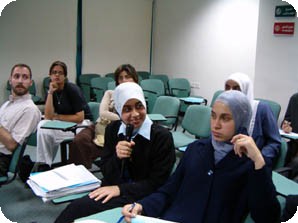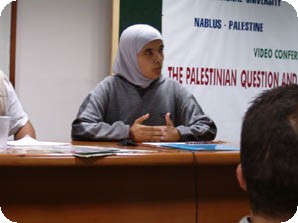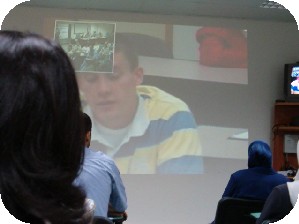Video Conference with Indiana Wesleyan University.
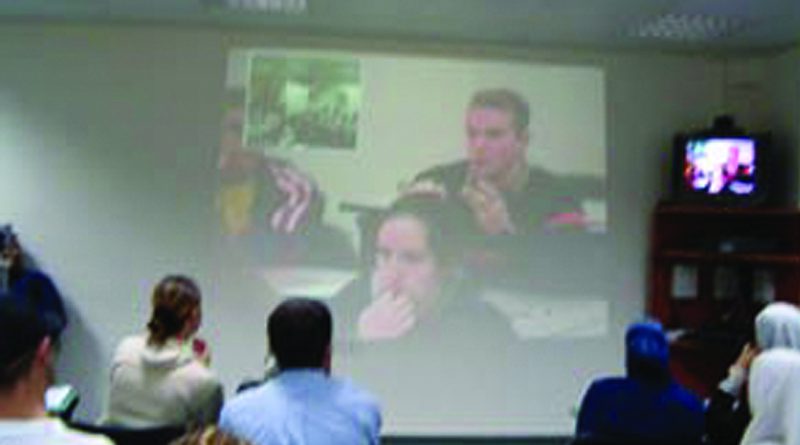

Zajel organized a video conference on the Middle East Conflict with students from Indiana Wesleyan University. The conference was attended by American students whom are currently taking courses about the history of the Middle East, Christianity and Islam, and An-Najah students from a number of different departments. The main aim of the conference was to establish a direct dialogue between students in America and Palestine, so that both sides could reach a better understanding of the realities of the situation in Palestine, and American thoughts and reactions to it. Along these lines, the conference was an overwhelming success.

The meeting started with an introduction to An-Najah National University, and the Zajel youth exchange program. This was followed by a brief summary of the current Intifada presented by the director of the Public Relations Department, Mr. Sami Al-Kilani. After this, a number of An-Najah students spoke about many of the important parts of the current conflict as effect Palestinian citizens on a daily basis, such as siege, occupation, invasion, assassination, settlements, apartheid wall, roadblocks and curfew.
The students clarified the nature of these problems, and gave examples from their personal lives to illustrate the extent of the hardships faced.

Prof. Riggs David served as the Indiana Wesleyan University mediator, and introduced his university and students,
as well as coordinated the questions from the American side. Dr. Patrick Daly was the mediator on the Palestinian side. In addition he gave a summarized on the impacts of the conflict upon university students, stressing the financial, psychological and social problems that accompany the constant threat of detention, injury, humiliation and loss of life.

After the student presentations about the various hardships caused by the occupation, the floor was opened to questions from the American students. They asked many thoughtful and important questions about the political and social situation here in Palestine. Their questions focused on daily life in Nablus under the siege, the impact of the occupation on the academic process, and also about the nature of religious tolerance and peaceful co-existence that currently exists between Palestinians of different faiths.
All Palestinian students were given the opportunity to speak freely in response, drawing upon their personal experiences. In spite of the often sensitive nature of the subjects discussed, the An-Najah students did well to answer all questions in a rational and coherent fashion.

In the final part of the conference, An-Najah students had time to ask American students questions about American thoughts and perspectives of Palestinians and the conflict. The discussion with the American students went smoothly and discussion was fruitful for both sides. The end result was that important and useful information was exchanged, and both sides learned a lot about the perspectives of the other side.

This encouraging conference comes as a result of the enthusiasm of Indiana Wesleyan students and Prof David who did his best in order to let this project see the light, it deserves mention that this is the first time in Palestine in which Palestinian students participates in video conference with an American university via video conference.

It deserves mention that Zajel Youth Exchange Program runs this project in order to narrow the gap between Palestinian students and the globe students, those Palestinian students who are forced to be separated from the world and were not even allowed to move in their country over the past few years, so, this video conference comes to strengthens the scientific and cultural exchange and dialogue toward better understanding between Palestinian students and the international students anywhere in the world.
